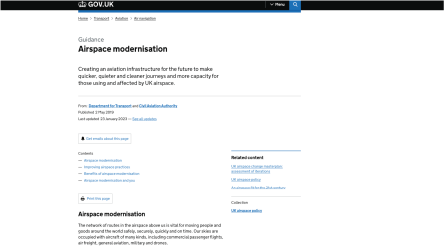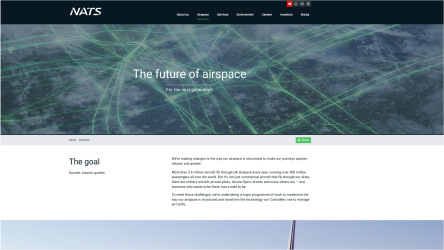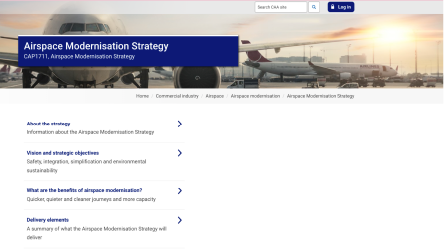What is Airspace Modernisation?
Airspace Modernisation is improving our airspace structure through new technology, including more accurate satellite-based navigation, and introducing more efficient flight paths.
Why is it important?
The UK’s airspace is some of the most complex in the world yet has not undergone significant change since the 1950s. Without modernisation, our airspace will struggle to keep up with the growing demand for aviation. The situation with deteriorate further in the coming years as demand for air travel continues to rise.
Successfully accommodating the growth in demand for air transport has meant adding significant complexity to the UK’s airspace system. Particularly where volumes of traffic are highest, principally over south-east England.
These complex routes are the motorways of the skies and require maintenance to allow the industry to grow safely and reduce delays otherwise predicted.
The Airspace Modernisation Strategy is essential for key government ambitions, such as growth and decarbonisation.
What is our role here?
The Department for Transport (DfT) and the Civil Aviation Authority (CAA) are working together to act as co-sponsors for the modernisation of the UK’s airspace.
This national infrastructure programme includes updating the structural design of airspace, changing how the systems on which it runs work, and using new technology to improve how air traffic is managed.
The programme will deliver quicker, quieter and cleaner journeys, through the creation of more direct routes, faster climbs, and the reduced need for holding stacks. This will mean the aviation industry can grow safely, customers will not experience the delays otherwise predicted, there will be opportunities to reduce noise and carbon emissions and to provide better access to airspace for all users.
Some interesting facts about Airspace Modernisation
Contrary to popular belief, the vast majority of UK airspace is uncontrolled.
Free Route Airspace (FRA) deployment in Scotland is estimated to save 12,000+ tonnes of CO2 per annum. Similarly, the recently deployed FRA West should secure further savings of 150,000 nautical miles, which is the equivalent to 7 trips around the world.
More than 2.6m aircraft use UK airspace in a typical year, carrying over 300 million passengers all over the world.
What does the future of Airspace Modernisation look like?
The future of Airspace Modernisation is the maintenance and enhancement of high aviation safety standards, the integration of diverse users, the reduction of complexity and mitigation against environmental impacts.
The Airspace Modernisation Strategy notes integration as one of its overarching and strategic objectives. Drones and other new and innovative aircraft use is increasing and will need to be able to use the airspace safely, largely facilitated by increased use of electronic conspicuity and rebroadcast of digital flight information.
The DfT and CAA led Surveillance Standards Task Force recommended electronic conspicuity specifications to use frequencies of 1090 MHz for crewed aircraft and 978 MHz for uncrewed aircraft, which aligns with ICAO standards. Following the Task Force, the implementation stage will require a rehaul of the current regulatory framework to ensure those frequencies are considered to achieve integration.
Where can I find out more

Airspace modernisation
– GOV.UK

A global leader in air traffic management and airport performance – NATS

The future of airspace
– NATS

Airspace Modernisation Strategy
– CAA

Flight Procedure Design Training
– ANI

Airspace TV
– NATS

We are the Airspace Change Organising Group
– ACOG

Aviation Training
– CAAS